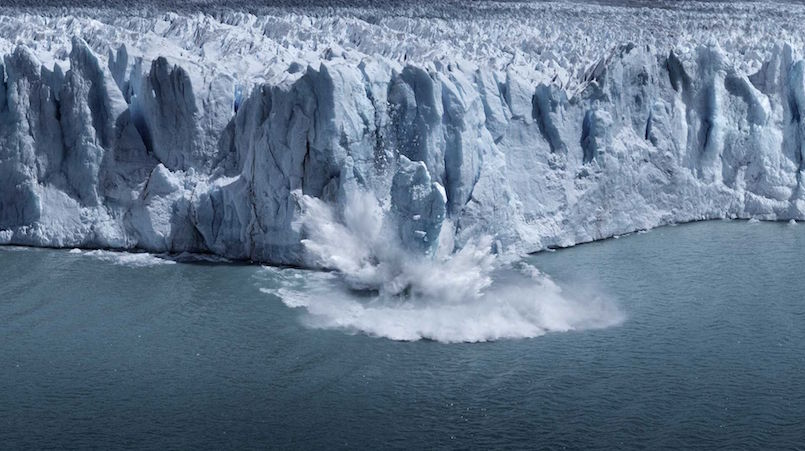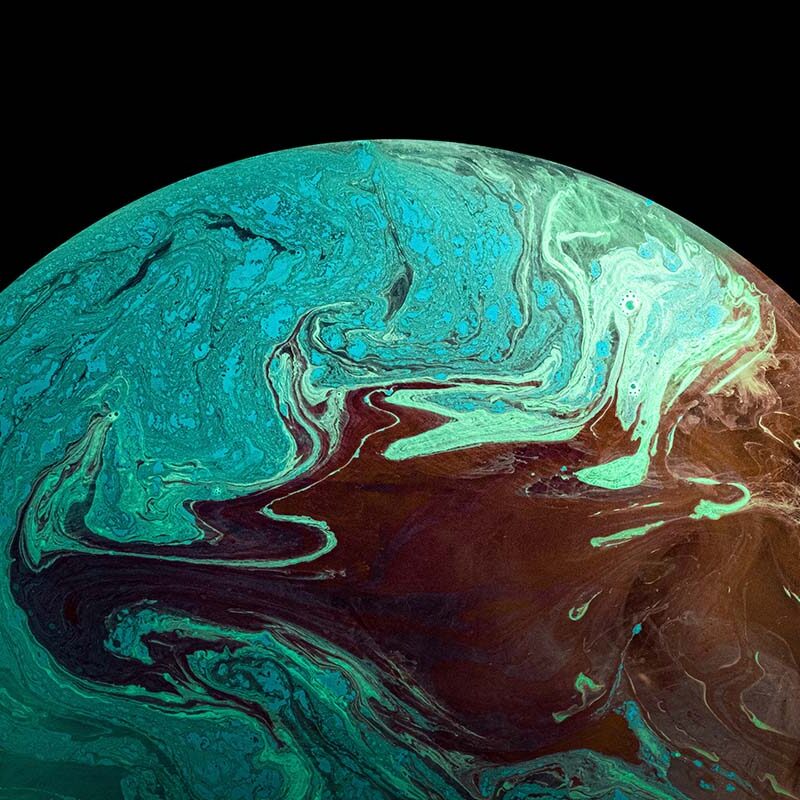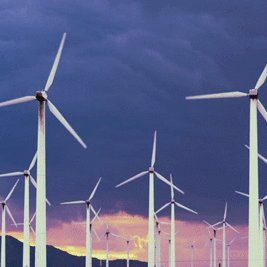
A million Facebook impressions can be a tonne of carbon
Brands reweight ad spend as indie media owners beat GroupM to punch with carbon calculator; publishers on notice
This article originally appeared in Mi3 which can be found here where Joel Trethowan, Managing Director of Alchemy One was interviewed on Alchemy One’s view on carbon emissions and the media industries responsibility.
$6.5bn fund manager Australian Ethical, Unilever’s Ben & Jerry’s, Lion’s Stone & Wood, Four Pines, Koala, The Body Shop and Danone ANZ are all Bcorps – and are all laser-focused on the sustainability and purpose credentials of those they do business with. That includes media owners and agencies. A new media carbon calculator developed by Benedictus Media sister company Net Zero Media – launching ahead of those being touted by the likes of GroupM – will give brands the means to see which media channels will deliver lowest carbon footprint. Bosses of Australia’s three certified Bcorp indie agencies, Benedictus, Alchemy One and Optimising, say those clients can then re-weight spend – and may even make shorter ads – in a bid to lessen environmental impact. They think it’s just the tip of the iceberg.
The drums are beating louder on sustainability and brands are starting to talk in earnest about placing ad budgets with those that meet their environmental, social and corporate governance (ESG) mandates – and taking them away from those that don’t.
In Australia Telstra has been most vocal – and CMO Jeremy Nicholas is dialing up the warnings for those seeking a slice of its $250m advertising and promotions budget. Within the supply chain GroupM has grasped the nettle, touting a carbon offsetting product available across programmatically traded media launching in Australia within six months while the big buying groups more broadly have started to press media owners on ESG as part of annual rate and volume deals.
But Australia’s independent agencies have got there first – with Benedictus Media founder and CEO Phil Benedictus now officially launching sister company Net Zero Media’s carbon calculator to the broader market.
The tool, being used by Benedictus client Australian Ethical, calculates the carbon footprint of a campaign, offsets it, and shows how it could be optimised by channel. For example, a brand building campaign could cut its carbon by pushing more budget into outdoor over TV, said Benedictus, or within channels such as TV, favouring the networks with the lowest carbon equivalent footprint.
But he says it’s complex calculation – and big brands seeking to report accurately on their annual greenhouse gas emissions need confidence that the results are robust.
Net Zero Media co-founder Chris Sewell brings that credibility. He’s also co-founder of The Gaia Partnership, which has been measuring carbon emissions for 15 years, and lists Google, Johnson & Johnson and Siemens among its client roster.
Benedictus said working with Sewell opened his eyes to just how much carbon brands are pumping out via advertising.
“It’s quite shocking. You can spend not that much on a Facebook campaign – five or ten thousand dollars. And in a million impressions, you might have actually added a tonne of carbon to the environment,” says Benedictus. “That is a lot.”
Corporates are taking note. While in Australia they do not yet have to report ‘scope 3’ or indirect emissions, some are taking the decision to measure and reduce them independent of what Canberra eventually decides to do.
“Corporates are beginning to take ESG very seriously and are trying to calculate their full carbon footprint. CommBank might have worked out the footprint of all of its offices and branches. But you are buying $100m of media, so what is that doing?
“That is complex, because it is not just that different media have different carbon footprints, it’s also that states have different sources of power [and therefore different carbon intensity within their power grids]. So, if it uses electricity, an ad run in Victoria [where power mostly comes from burning coal] has a worse footprint than an ad run in Tasmania, where it is mostly hydro power,” said Benedictus.
“So it’s a really complex area. Our mission is to try and bring science to that so people can understand the carbon footprint of their advertising – and how to make it better.”
Benedictus reiterates that the advertising footprint for many corporates is probably bigger than they think.
“We obsess about things like air travel, but internet use [consumes] something like three times the energy of air travel globally. And that’s just one medium.”
It's quite shocking. You can spend not that much on a Facebook campaign – five or ten thousand dollars. And in a million impressions, you might have actually added a tonne of carbon to the environment. That is a lot.
Rise of the Bcorps
While brands like Australian Ethical are natural early movers for carbon neutral advertising, the vanguard is likely to be driven by Australia’s Bcorps as much as the Telstras and the CommBanks because they are often, although not always, more nimble and more committed to good corporate citizenship – and have gone through a comprehensive process to prove it, which is independently accredited.
Bank Australia is a Bcorp, as are Koala, Four Pines, Stone & Wood and Danone ANZ (see Australian Bcorps listed here).
While Benedictus Media has been a Bcorp for six years, other independent media agencies are also joining the ranks. Last month Melbourne-based performance agency Optimising achieved Bcorp status, following Sydney-based Alchemy One last November.
All three say their non-Bcorp clients are asking how to become one – and that other Bcorps are tapping them up for media representation. On the flip side, the Bcorp agencies are declining to work with clients that do not align with their business ethos – an inversion of the supply chain warnings now coming from brands.
“[Becoming a Bcorp] has given us a process to evaluate who we work with,” says Optimising co-founder James Richardson. “We go through a checklist … and if it doesn’t fit with being a Bcorp … we’ll look to avoid that campaign. That’s probably been the biggest change for us.
“Over the years, it’s been easy to take on whatever comes across your desk if it seems like a good opportunity. But now we’re sitting back and evaluating to see whether they’re the right opportunity for us.”
‘Clean’ money talks
Alchemy One MD Joel Trethowan says the agency aims to incorporate the Net Zero Media calculator into its planning process – and thinks it will ultimately drive investment decisions based on carbon footprints. Once brands can transparently measure, he suggests, they can manage media supply chains accordingly.
“The more [brands] have the ability to do this in an easy way, for example to understand the [carbon] impact across, say Seven, Nine, and Ten … and choose a network [on that basis] … the more it will progressively happen,” says Trethowan.
“That is a competitive advantage and would definitely be seen as favourable for a number of our clients … and the more pressure that comes in those decision-making processes, the more change there will definitely be in that area.”
Phil Benedictus thinks that pressure is already starting to build.
“I’ve heard rumours that the major holding groups are talking about this to suppliers. And when they start talking, given the the sums of money they’re spending, I think people do start listening,” he says.
“If you can get a single station buy across Seven and Nine, and you were looking for something to swing the decision for someone like an Australian Ethical, a Bcorp which definitely takes this seriously? Hell yeah. If you know you’re going to get the same result, but one of them smells better, they are going to go with that.”
But Benedictus thinks brands may also end up making shorter ads in a bid to reduce footprints. Perhaps blink and you’ll miss it viewability standards were ahead of their time after all.
A green gold rush?
Ultimately carbon-based media planning appears unavoidable. How quickly is the $18bn question in Australia. But alongside Telstra the likes of Commbank, IAG, Suncorp, Westpac and Woolworths have all set significant decarbonisation targets. Multinational media buyers have almost all set aggressive net zero mandates – which eventually means they cannot in good faith spend money with misaligned media owners:
- Publicis has set out plans to be net zero carbon by 2030, and use 100 per cent renewable power by the same date.
- WPP committed a year ago to achieve net zero carbon emissions from its own operations by 2025, and net zero emissions across its entire supply chain by 2030.
- IPG last June signed up to reach net zero carbon by 2040 and 100 per cent renewable power by 2030.
- Dentsu has already switched to 100 per cent renewable power and pledged to reach net zero emissions by 2030.
While 94 per cent of companies that have historically attempted Bcorp certification have failed, Phil Benedictus thinks even starting the process represents progress. He points out that if alcohol businesses can be deemed clean, green and socially responsible (Mi3 has absolutely no problem with that), alongside ice cream companies (Ben & Jerry’s is nobly delicious junk food), then other businesses attempting to clean up their act have nothing to lose.
Optimising’s James Richardson agrees, citing a client that is involved in “large scale construction projects”, such as crane hire and the like.
“They will have to think about a lot of different issues. But he’s keen on initialising the process and just seeing where he gets to. At a minimum, he’ll make his business better even just by starting the process,” says Richardson.
But Alchemy One’s Joel Trethowan urges businesses thinking about undertaking Bcorp certification not to underestimate the fundamental commitments it will require – not just to sustainability, but to equality, diversity and best social practice in every facet of their set-up.
For big media networks, that is a daunting task. But Trethowan points out that Bank Australia has multiple locations across the country and took years to get to the point of starting the Bcorp certification process.
That shows, he says, “if the desire is there, it can be done by any industry”.






















